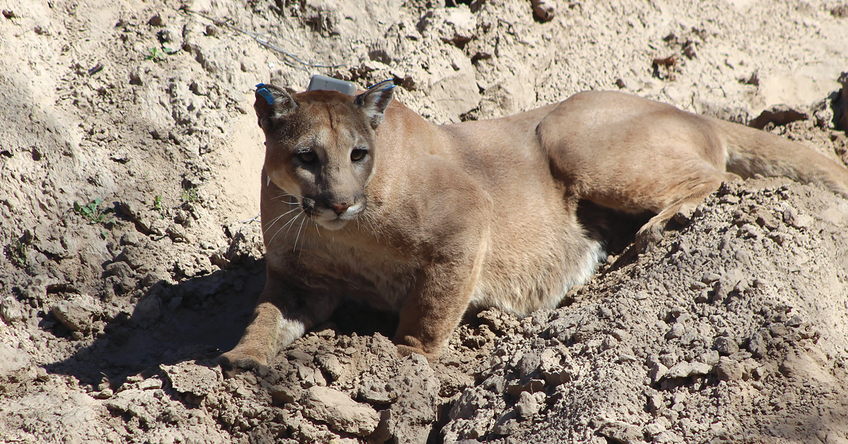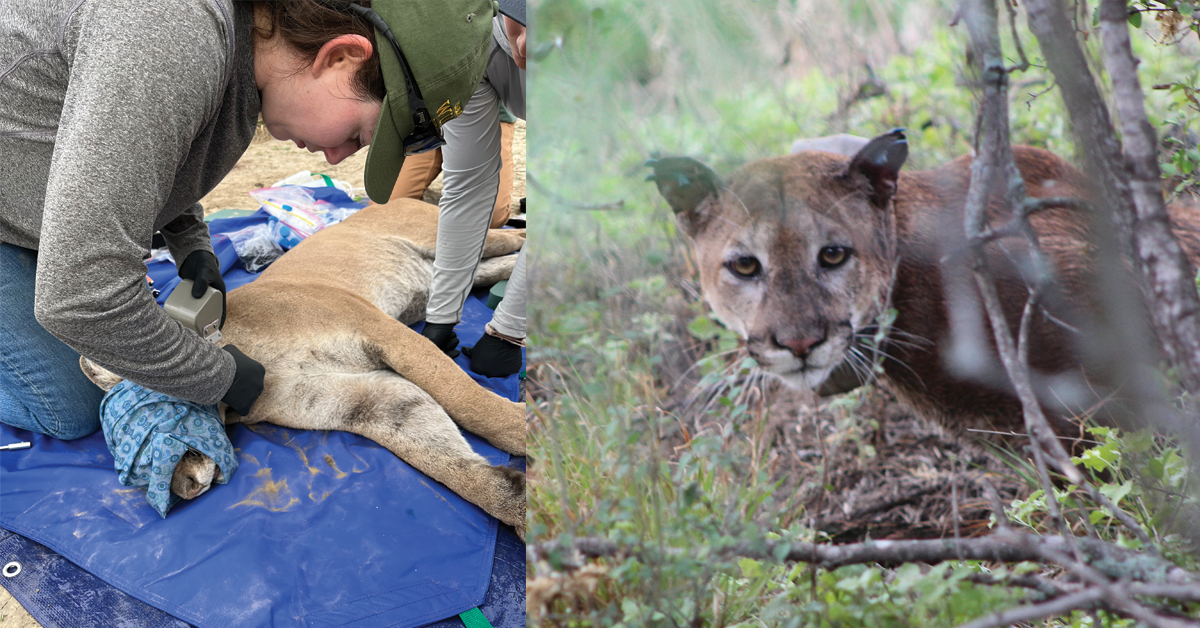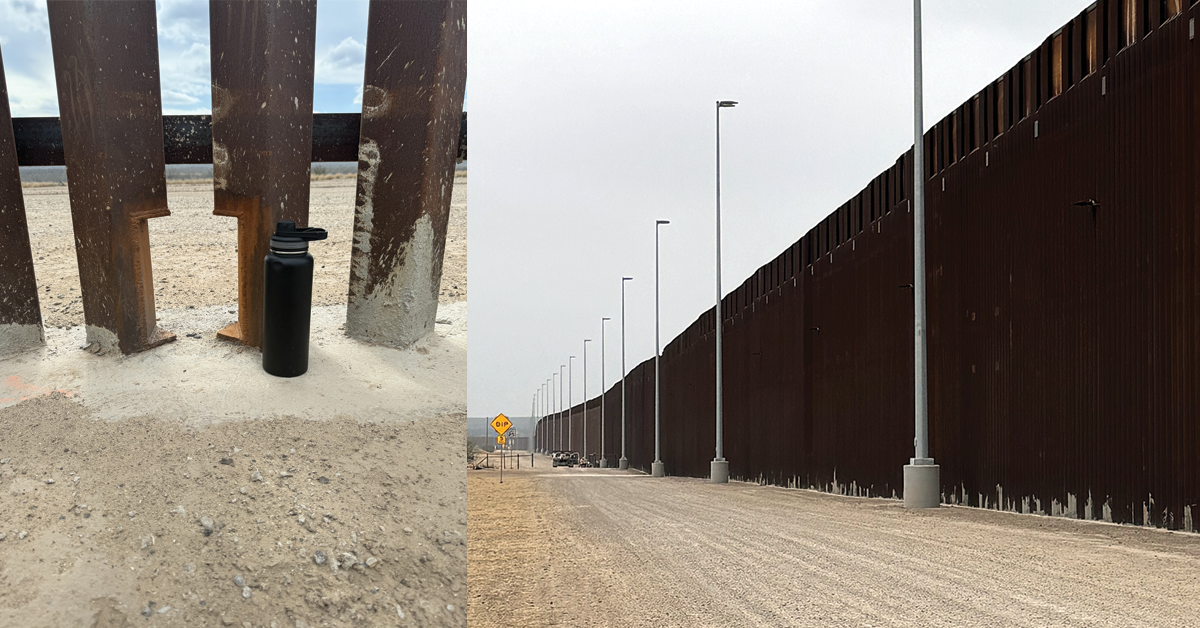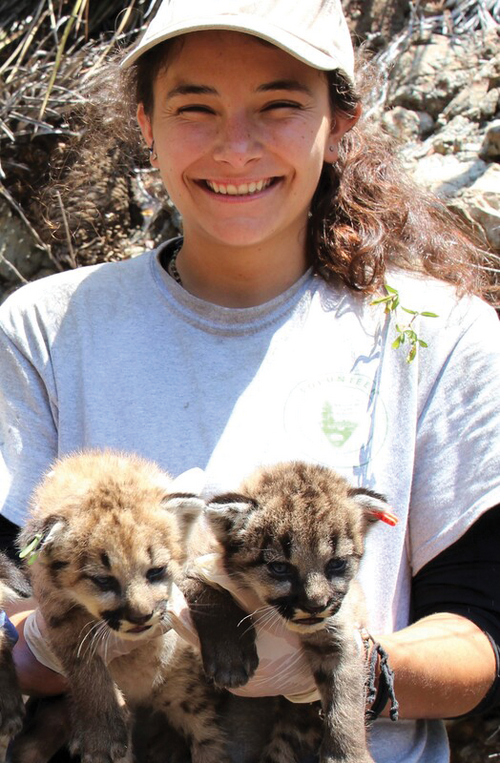Mountain Lion Ecology in South Texas

As a Boone and Crockett fellow and Ph.D. student, Chloe Nouzille studies mountain lion ecology in South Texas through the Caesar Kleberg Wildlife Research Institute at Texas A&M University–Kingsville
By Chloe Nouzille
Printed in Fall 2024 Fair Chase Magazine
Large carnivores have indirect and direct impacts on their communities, often serving as a keystone species, which has a cascade effect on the landscape. Carnivore management is challenging due to the animals’ low densities, wide-ranging behavior, and the need to navigate complex viewpoints on human-carnivore coexistence. Carnivores require large, continuous habitat spaces to access resources such as prey and mates. As such, carnivores move more than smaller or more generalist species, making them more likely to interact with barriers. Structural barriers (e.g., fencing) represent an additional challenge and can affect wildlife worldwide. Several studies have examined the effects of barriers on movement and connectivity, yet few studies have quantified their effects on carnivore population viability. Understanding the potential impacts of barriers and creating an appropriate management plan can be further complicated when little information exists about the population’s distribution and population dynamics.
Mountain lions (Puma concolor), a.k.a. cougars, pumas, or catamounts, are popular among hunters and other wildlife enthusiasts. They are the second-largest cat in the Americas, second only to jaguars, and range from the Canadian Yukon to southern Chile. Aside from a small population in Florida, they were extirpated from the eastern U.S. by the early 1900s. As states began ending the bounty on mountain lions and several reclassified them as game animals, populations began to recover.
Texas is the only state that classifies mountain lions as non-game. Hunting is allowed year-round, and reporting harvest is optional. However, recently, Texans called on the Texas Parks and Wildlife Department (TPWD) to create a lion management plan. In response, TPWD put together the Mountain Lion Stakeholder Group, which consists of 19 members of various backgrounds, including private landowners, ranch managers, houndsmen, researchers, private wildlife biologists, and subject matter specialists. TPWD asked the group to create a report on six items: 1) abundance, status, distribution, and persistence of mountain lions in Texas, 2) development of a management plan, 3) harvest reporting, 4) trap/snare check standards, 5) harvest/bag limits, and 6) canned hunts.
In January 2024, the group presented their report to the Texas Parks and Wildlife Commission. A clear outcome of the stakeholder’s report is that the scientific community knows little about South Texas lions, including information about their abundance, distribution, and population viability. In May, TPWD commissioners addressed two of these objectives and voted unanimously to ban “canned” hunting of mountain lions, meaning it is no longer legal to capture and later release a mountain lion for the purpose of hunting. Moreover, the commission mandated that live mountain lions be removed from traps within 36 hours. While the stakeholder group agreed that TPWD should develop a mountain lion management plan for Texas, the lack of data to inform any management changes remains.
While mountain lions are present within West and South Texas, the species has not been formally studied in South Texas in over 20 years, so their current population status is unknown. Additionally, the population faces the construction of a 30-ft tall metal border barrier system separating the United States and México. This barrier can potentially fragment the population by cutting off a source of genetic inflow from Mexican lions. The impact this presents is compounded in this population because it has one of the lowest reported densities of lions in North America and has low levels of genetic diversity. These compounding factors put this population at risk of extirpation. Fortunately, a new research project will identify adverse effects, if any, and suggest possible solutions.
The South Texas Lion Project
Through the Caesar Kleberg Wildlife Research Institute (CKWRI), the South Texas Lion Project (STXLP) is working with TPWD and private landowners to study mountain lions in South Texas. Funding for the contract came from Customs and Border Protection through the United States Fish and Wildlife Service. Under the guidance of Drs. Lisanne Petracca, Michael Cherry, and David Hewitt, a B&C professional member and director of CKWRI, graduate students are evaluating the potential impacts of the border barrier system on large carnivores. The project assesses transboundary movements, genetic connectivity, and population dynamics of mountain lions. Specifically, we aim to characterize movement behavior and space use near the border barrier system to identify crossing corridors between México and South Texas. We are collecting genetic samples from Texas and New Mexico to analyze the genetic structure and effective population size of South Texas lions. Lastly, we are investigating foraging behavior and quantifying lion distribution and abundance in the region.

The STXLP started fieldwork in February 2024, and trapping efforts have focused within the “Golden Triangle” between Eagle Pass, Cotulla, and Laredo. Given that Texas is around 95 percent privately owned, the team is especially grateful to the landowners who grant us access to roughly 300,000 acres. In February, the STXLP team placed the first GPS collars on lions in the South Texas region. Lion “P01” is a three-year-old male who weighed 118 pounds at the time of capture. Lion “P02” is roughly 1.5 years old and weighed 116 pounds at capture. Both animals were released and are traversing the ranchlands of South Texas while the team closely monitors their movements.

The collars use geofencing, which means they are programmed to switch from a normal fix rate to a high fix rate when the lion moves near the border. This fine-scale data will allow us to characterize lion behavior near the border barrier system, identify corridors critical to gene flow, and investigate clusters that will teach us about habitat use, feeding, and denning behavior. The research team also uses camera traps to survey mountain lions more broadly in the borderlands from Del Rio to Brownsville. We can provide density and distribution estimates using a partially-marked population, photo data, and statistical modeling.
If adverse effects of the border barrier structure are found, we can then identify mitigation strategies. One existing strategy is the installation of crossing gaps measuring 8.5” x 11”, intended to allow lions through the border barrier system without allowing human passage.

The STXLP represents one of the first evaluations of the potential impacts of the border barrier system on a large carnivore. It is important to investigate the current population status of South Texas lions to assess how a barrier might affect a potentially fragile population. In addition to proposing mitigation strategies, we will provide landowners and state agencies with information about lion distribution, abundance, and ecology that can inform potential changes to lion management in Texas. Lastly, our study will reveal the effects of projects to secure the international border on large carnivore conservation and act as a case study for the partnerships required to confront this developing issue.
Boone and Crockett Fellow: Chloe Nouzille
As a Boone & Crockett fellow and Ph.D. student, I study mountain lion ecology in South Texas through the Caesar Kleberg Wildlife Research Institute at Texas A&M University—Kingsville. My goal for the South Texas Lion Project is to calculate lion density, characterize movement behavior and space use near the barrier system, and characterize foraging behavior.
After completing my Ph.D., I will pursue a research-based career in wildlife conservation through a university, NGO, or agency, where I can answer questions that contribute to our understanding of conservation.
I grew up in California and received my B.S. in ecology and evolutionary biology from the University of California, Irvine. As an undergraduate, I worked as a veterinary technician and a laboratory assistant, but there were few opportunities to participate in nature. After my third year, I was privileged to work as a research assistant at Mabula Game Reserve in South Africa, where I studied the behavior of elephants, rhinos, and lions. This was a pivotal moment that solidified my desire to work with wildlife. Following graduation, I interned with the National Park Service, studying mountain lions in a fragmented landscape, and gained valuable field skills. My M.S. at the University of California, Los Angeles, focused on mammal recovery and recolonization following one of California’s megafires.
About B&C Fellows
A Boone and Crockett Fellow is an undergraduate or graduate student or postdoctoral associate who is supported by Boone and Crockett funding and/or advised by a Boone and Crockett Professor or Professional Member. In addition to displaying academic excellence, Boone and Crockett Fellows are committed to scholarship that:
- Promotes effective conservation policy through dedication to research, education, outreach and service.
- Exhibits leadership in wildlife conservation.
- evolution of conservation in America.
- Recognizes and appreciates the values of hunting and fishing and the principles of fair chase.

